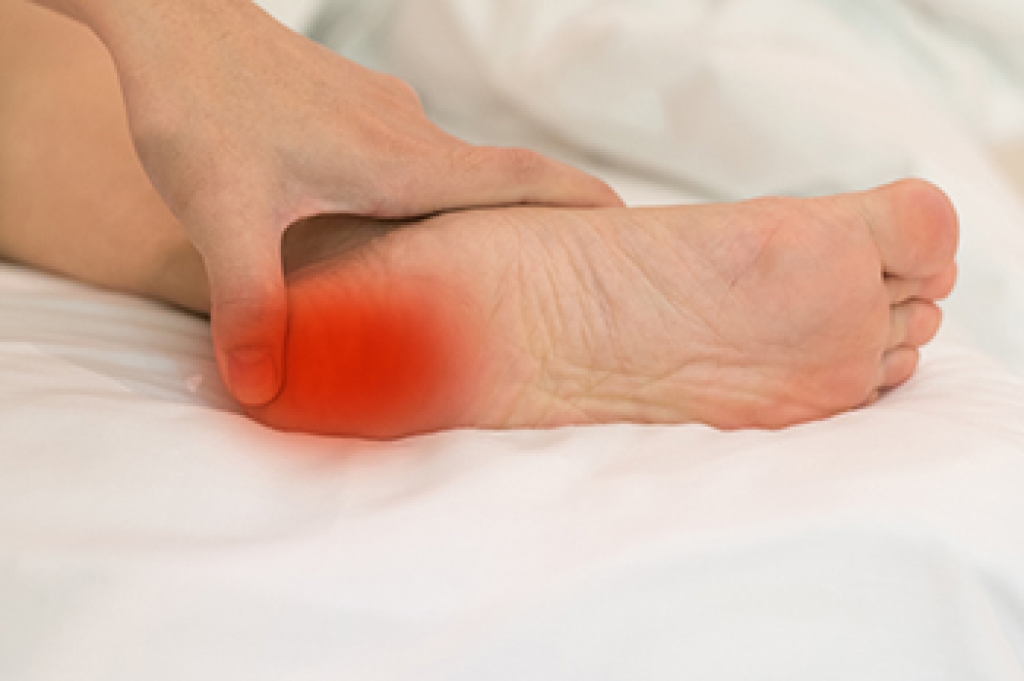
Heel pain is an issue many Americans face every day. In fact, it is the most common form of heel pain. Why? The plantar fascia tissue on the bottom of your feet works hard. It connects your heel bone with your toes, helps form and support the arch, acts as a shock absorber, and is constantly contracting and lengthening as we walk, run, and jump. This hard-working tissue can become damaged or even torn from overuse, thus causing pain and inflammation in the heel referred to as plantar fasciitis. If you have plantar fasciitis you will most likely feel pain throughout the day, but it is particularly acute first thing in the morning. There are things you can do to help avoid the development of plantar fasciitis, such as wearing shoes that fit properly and maintaining a healthy body weight. Consult with a chiropodist for more preventative tips on how to avoid plantar fasciitis, or to receive treatment for this painful condition.
Plantar fasciitis can be painful and interfere with your daily activities. If you are experiencing foot or heel pain and believe you may be afflicted with plantar fasciitis, please consult with one of the chiropodists from The Footcare Centre. Our chiropodists will assess your condition and provide you with quality foot and ankle treatment.
What Is Plantar Fasciitis?
Plantar fasciitis refers to the inflammation of the plantar fascia, a ligament that runs along the bottom of the foot and connects the heel bone to the toes. Repetitive activities, such as running or jumping, can injure the plantar fascia over time. Plantar fasciitis can also be caused by flat feet, high arches, pregnancy, and activities that put excessive pressure on your feet, like standing all day for work. When the plantar fascia becomes inflamed, it causes pain and discomfort.
Symptoms
Typical symptoms of plantar fasciitis include:
- Stabbing pain near the heel
- Pain that is worst in the morning or after a period of rest
- Pain that increases after exercising
- Swelling
- Tightness in the Achilles tendon
Diagnosis
Plantar fasciitis is typically diagnosed via medical history and physical examination.
Treatment
Treatments for plantar fasciitis include resting and icing the affected foot, stretching the foot, taking medications to reduce inflammation, and wearing orthotics. In severe cases where pain does not improve with conservative treatments, injections or surgery may be recommended.
If you have any questions, please feel free to contact our office located in . We offer the newest diagnostic and treatment technologies for all your foot care needs.
